Jaan Pehchan Ho with Dilip Naik
‘Aaja aaja main hoon pyar tera’ That attacking, introductory guitar solo of an iconic song. A clear, sharp guitar in the interlude of ‘Aasman se aaya farishta’ (An Evening in Paris) or ‘Tumse accha kaun hai’ (Jaanwar). Yet another fast-paced intro, interludes, in keeping with the rock and roll theme of an iconic song from Gumnam ‘Jaan pehchan ho’.
These are some memorable solos played by ace guitarist Dilip Naik, now leading a quiet life in Navi Mumbai. The team from Swar Aalap consisting of Dinesh Ghate, Nirav Ghate, and K.V.Ramesh were fortunate enough to spend two joyful hours with Dilip Naik as he took a trip down memory lane to the past. Read on for some wonderful glimpses of how a lot of hard work went into the making of some of the iconic tracks.
> Thank you for seeing us and taking time out to share your experiences.
It’s my pleasure, and very kind of you, to give me a chance to recollect the past.
> Let’s start from the beginning. The early years. How did you get interested in music and specifically the guitar?
From childhood, I was interested in music. At school, I couldn’t concentrate on my studies. The teacher wrote a letter to my father asking, “is there a domestic problem at home?”! I used to play the harmonica in school. After we came back from a picnic where I played the harmonica, our music teacher took me to a room that had a clarinet, a violin, and a mandolin. I chose the mandolin, and he taught me the sargam’ sa re ga ma pa dha ni sa”. I took it home and started playing it.
Then I heard Les Paul playing ‘San Antonio Rose’ in 1955 or 1956 at a Christian friend’s place. I still have the record with me. That completely changed my mind, and I told myself, “I want to play the guitar”. My father was absolutely against my taking up the guitar for a living. He told me that I would never make a living from playing the guitar; he was right in his way, but I still wanted to play it.
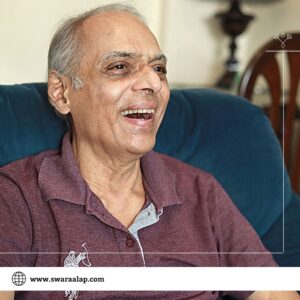 He bought me my first guitar at Rs 70 from Dhobi Talao. It was a German make Arcus, an acoustic guitar. I used to hang around with many Christians in Bandra and, at times, even dress like them though I stayed in Kings Circle and studied at Chhabildas School, Dadar. My brother, who was studying at Saboo Siddique College at Byculla put me in touch with Marvin Rosario from Bandra, who taught me my first few chords. He also gave me Nick Manoloff’s chord book and told me to learn the chords from them. With him and his brother, who played the “box bass”, we formed a trio and played in many house parties, birthday parties, and so on. Strictly popular numbers like “Rock Around the Clock”, “Love me tender”, etc. were superhits in the 1950s.
He bought me my first guitar at Rs 70 from Dhobi Talao. It was a German make Arcus, an acoustic guitar. I used to hang around with many Christians in Bandra and, at times, even dress like them though I stayed in Kings Circle and studied at Chhabildas School, Dadar. My brother, who was studying at Saboo Siddique College at Byculla put me in touch with Marvin Rosario from Bandra, who taught me my first few chords. He also gave me Nick Manoloff’s chord book and told me to learn the chords from them. With him and his brother, who played the “box bass”, we formed a trio and played in many house parties, birthday parties, and so on. Strictly popular numbers like “Rock Around the Clock”, “Love me tender”, etc. were superhits in the 1950s.
Then I came across Charanjit Singh and accordion player Dheeraj, who played Hindi Film songs. I went to Solapur for a show with them. I met a drummer there who wanted a guitar player for a series of shows in Kashmir in 1960. The six-month stint in Kashmir taught me many things, and that’s where I got into jazz. Though the four of us were terrible players with no sense of intonation, I learned around 100 tunes in pop, cha-cha-cha, jazz. Primarily I learned jazz standards like “How high the moon”, “Sweet Georgia Brown”, etc. Nobody knew anything like substitution etc.; we just played basic chords. It was a great learning experience.
> Getting into film music, how did that happen – the transition from stage shows to playing in film songs?
When I came back from Kashmir, I was learning from a trumpet player Josic Menzie. who asked me to play the guitar, which I did. He liked my sound and introduced me to Sebastian D’Souza, who took my test by asking me to play from the notation sheet. He liked my sound and said, “tomorrow you are recording with me for Shankar Jaikishan”. I was utterly blown away and in something of a shock; it was unbelievable.
The next day I reached the studio, and Sebastian rehearsed me with the music chart, telling me where to come in, gett my solos correct, and not make any mistake. He made me play my section four times and finally okayed it. This was for Asli Naqli – the song was ‘Chheda mere dil ne tarana tere pyar ka” by Rafi Saab. I played for one more song in the same movie, “Gori Zara has de tu”. I was one of the three rhythm guitars in both songs, but it was a great experience.
Pretty soon, I got a call to play the electric guitar, and again I was like, “Oh My God. Something wrong here”. I didn’t have an electric guitar. So, I borrowed one from Charanjit Singh. That was a real turning point for me as the recording was “Nainonwali tere Naina jaadu kar gaye” from Beti Bete.
> Your tone is very sharp and clear. In the Beti Bete song, the electric guitar came in the intro, interlude, and some fillers. It was significant work for you as a new guitarist.
Yes. As you rightly said, this was for almost 16 bars in the intro, fillers in the mukdha, 24 bars in the interlude. I was lucky that the start in the introduction was used in the radio ad for the movie. Dattaram heard it a few days later, and soon everyone knew me as the guitarist in that radio ad and the song. So, everyone started talking to me, to play for them. Like Kalyanji Anandji, Laxmikant Pyarelal, OP Nayyar, etc. Mostly I played for Shankar Jaikishan for many songs.
> When did you get your electric guitar?
As I said earlier, I had borrowed Charanjit’s guitar of unknown make for two recordings. Subsequently, I bought a Hofner thin body electric guitar and played it until I got my Firebird in 1964
> I am sure you remember the below songs of Shankar Jaikishan where you have played the guitar.
Many. You can list them as below:
- April Fool – Lata – Mera naam Rita Christina – Intro and Interludes 1 and 2
- Beti Bete – Rafi – Nainon Wali Tere Naina Jadoo Kar Gaye – Prelude, Interlude 1, 2, 3, Fillers
- Gumnaam – Rafi – Jaan pehchaan ho – Intro solo, Interludes 1, 2, 3 (Shankar asked me to play in a lower octave for this one compared to my normal sharp tone.)
- Gumnaam – Lata – Is duniya me jeena ho to – Intro
- Jaanwar – Rafi – Asha – Dekho Ab to Kisko Nahi Hai Khabar – (There was lots of guitar work for me, as it was a direct copy of the famous Beatles hit, I anna Hold Your hand)
- Jaanwar – Rafi – Tumse accha kaun hai – Interludes 1, 3
- Love In Tokyo-Rafi – Aaja Re Aa zara lehrake aa zara -Prelude, fillers in mukhda and antra
- An Evening in Paris – Rafi – Aasman Se Aaya Farishta – Intro, Interlude 1,2,3
- An Evening in Paris – Rafi – Akele akela kahaan ja rahey ho – Only time I played Hawaiian Guitar
- An Evening in Paris – Rafi – Aji Aisa mauka phir kahan milega Interlude 1, 3 solos
- Chhoti Si Mulaqat – Rafi – Na mukhda modke jaao – Interludes 1,2,3
- Around the world – Mukesh – Joshe jawani haaye re haaye
- Jhuk Gaya Aasman – Rafi – Kahaan Chal Diye – Intro, fillers for vocal, Interlude 1, 2, 3.
- Tumse Achha Kaun Hai – Rafi – Kabhi Humne Nahin Socha Tha – Interlude 1, 3
Lots of work for Shammi Kapoor as you can see; (laughs) -I didn’t like some of the clownish things he did in the songs.
- Yakeen – Rafi – Yakeen karlo mujhe Mohabbat
- Vachan – Mahendra – Kishore – London se aaya hoon – Intro, Interlude 1, 2 – (smiles) “I had forgotten this one.”
> Your tone in all the above songs is a sharp, clear tone. Did you ever play in a mellow tone?
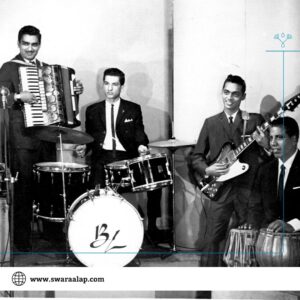
I was labeled a hard-tone player and always had to play attacking lines. Hence, I never got to play a mellow tone romantic solo, except for ‘Yeh parbaton ke daayre for Chitragupta in Vasna. I also noticed recently that I hardly played any electric solos in Lata’s songs. Most of the songs I played were sung by Asha, Rafi, Kishore, and Sharda. Very few for all the rest. Another song I remember where I played a mellow tone and a couple of nice swing lines is Kuch bhi kahe dunia wale from Johar Mahmood in Goa, a fun song arranged by Pyarelal Sharma.
> Coming back to your journey, Shankar Jaikishan gave you a break. From the above, we can see that you worked maximum with them. Share what happened later. How about others?
Later, I started playing with everybody, Kalyanji Anandji, OP Nayyar. I joined OP around 1965. He liked my style and wanted me to compose some stuff. He already had this tune based on “Red River Valley”, which became “Laakhon hai yahaan dilwale”. I wrote the intro, interludes for that song, and naturally, they were all guitar solos. One of the few songs where the guitar is used maximum, in a pleasant 2-4 beat, so much like OP’s “ghoda gaadi beat (smiles)
> Your work with OP Nayyar?
I composed the interludes for both the male solos – Laakhon hai yahan dilwale and, “Aankhon me Qayamat ke kajal”. I assisted OP and am credited in the titles as an assistant. The interlude in his other famous song, “Huzoorewala jo hogi ijazat” (from Yeh Raat Phir Na Aayegi). Yet another piece of mine for OP was “Tu auron ki kyun ho gayee” (from Ek baar Muskura do).
> How was OP to work with? We have heard various stories that he was a strict disciplinarian. Start and end on time. If recording starts, then no one should enter. How much of this is true?
Yes. That’s true. Once for some recording, Sattar, the famous dholak player, was outside on a cigarette break. The door was locked, and Sattar couldn’t enter. So, OP said we would play with only those who are inside the studio. He was like that. He used to record his songs in one to two hours maximum. Everything was set—no last-minute changes by anyone. Every musician played what was on his sheet—rehearsal outside the studio. Take in the Studio. It was all the same. No changes at all.
> Other Music Directors?
Jaikishan was also like that. Rehearsal room in Famous Studios. Then take. No changes. C. Ramchandra also I played.
> How many takes? Normally one take?
Normally One. At times two. Nevermore than two with Shankar Jaikishan. They never changed what was done in rehearsal though some others were notorious for changing 2 bars here, 4 bars there, and so on. Ravi was like that, and sometimes we were exhausted after his recordings. On that topic of Takes, I must share that “Jaan Pehchan Ho” had two takes. In the second take, Rafi did some strange uh-ohs, and so on at the end of the third antra. Shankar liked that, and it was the take that was final.
> Some of the other MUSIC Directors you played for?
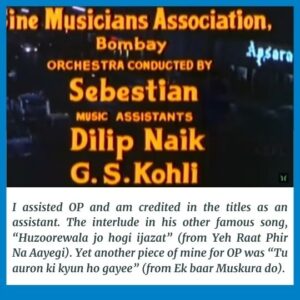 N.Dutta. Sapan Jagmohan. Naushad. Naushad is due to my relation with Kersi Lord, who arranged for Saathi. The 1st para interlude of “Mera pyar bhi tu hai” from Saathi starts with my guitar. So too Ganwar ‘Behka behka roop tumhara behko behki chaal”. I hardly played for some of the finest composers like Madan Mohan and Jaidev. Their music was heavily classical-based, and there was no scope for an electric guitar.
N.Dutta. Sapan Jagmohan. Naushad. Naushad is due to my relation with Kersi Lord, who arranged for Saathi. The 1st para interlude of “Mera pyar bhi tu hai” from Saathi starts with my guitar. So too Ganwar ‘Behka behka roop tumhara behko behki chaal”. I hardly played for some of the finest composers like Madan Mohan and Jaidev. Their music was heavily classical-based, and there was no scope for an electric guitar.
> Arrangers and arrangements?
Sebastian was hugely talented. He could make some of the arrangements in an hour or so. What’s unique about him was he had a particular style for Shankar Jaikishan. OP Nayyar. Salil Chowdhury. Some of the finest arrangers of film music are Sebastian, Pyarelal, Louis Banks, Chris Perry, Amar Haldipur.
> In the sixties, you did some stellar work, and into the seventies too. Anything memorable? Foreign Tours?
I worked from 1963 – 1975. One memorable Foreign Tour was the famous West Indies Tour of Rafi Saab and other musicians in 1966. Many sessions work for some famous songs already mentioned above. Then in 1971, Jaikishan died, leaving Shankar with minimal work. People think that because I played with Pancham in Aaja Aaja, I must have been heavily involved in his orchestra, but it wasn’t so as Pancham already had his team of guitarists. So, in the early 1970s, I also found that Pancham was using me very minimally. The whole music scene was also changing. Pyarelal was doing some great stuff. They are on a high in the late 1960s and early 1970s and had to come up with tunes repeatedly. How much work they did – it’s incredible!
> Back to Jaan pechchan ho. Some insights from your end for that iconic song and session?
I have already told you about the second take. It’s all tight arrangements and rehearsals. You must be knowing how popular that song has become because a French music band and a Swedish band are singing it, thanks to the Heineken ad.
> You may also be surprised to know that the 2001 English movie Ghost World uses the song as its opening and closing title scene.
This is news to me. Show me… Opening scene https://www.youtube.com/watch?v=IUvqE-4LhSU
(After watching) Amazing. Truly unique that this song has become much more iconic than I thought. Because of Teesri Manzil, people think I played a lot of guitars for Pancham, but it was more for SJ who gave me extended solos of 16, 24 bars, and so on.
> Going back again, besides OP in Kismat, did you assist anybody else?
No. I didn’t.
> Do you feel as the quantity of music goes up, quality comes down?
Yes. Certain Music Directors, it was like that. Even SJ in later years was quite monotonous in some songs of the late 1960s. Sooner or later, it happens to everyone, and you start recycling old numbers. OP took it further with his famous ‘ghoda gaadi” beat. (Laughs)
> True but look at its popularity!
And simplicity. That was his strength – anyone could hum his tunes! A man on the street could hum his songs. That’s how songs should be.
> Going back, anything for S.D. Burman?
SD was always a Bengali folk music lover, and that showed in his tunes. Off-hand, I can’t remember.
> We are sure this is you in this song Karle pyar karne ke din hai yehi from Talash?
Yes. That’s me. My tone. I had forgotten this one. One very rare recording for SD Burman.
> So, your maximum work was in the 60s. How did the 70s work out for you?
I started practicing 12 to 13 hours a day, preparing to go to the US and play jazz. I hiked my rates to play for a minimal number of MUSIC directors as I wanted to focus on jazz. I earned enough to keep me going but not the kind of extensive work I did in the 60s. I was practicing more and more and working less and less, focusing on doing jazz only. I then went to New York in 1975. For two years, 1975 and 1976, I played with some names like John Abercombie, my mentor. I used to play with the Jazz Mania Society.
I played a lot with Joseph LoDuca, who later became famous for composing for TV serials, most famously Xenia the Warrior Princess, and many more. Most of them are world-class players but largely unknown as it is not easy to make a mark in the music world. So quite a few of them have day jobs or do something that gives them their daily bread.
The learning curve was very high. Lots of contemporary jazz and free form. Not avant-garde. Freeform. I can’t tolerate Avant-garde. It’s nonsense and noisy.
> So, what happened by 1976? did you find any work?
No. I was broke. Absolutely broke. I somehow came back. In 1982 I again went back because I was unhappy with some local musicians who didn’t want me back and playing regularly. In 1982 I went to Houston, which didn’t have as much of a music scene as New York. It’s a small place with not too many opportunities and a limited number of clubs. Pretty soon, it was back to square one, and so I did some odd jobs like a printing shop, and so on. I also saw that some Julliard and Berklee graduates were also in similar conditions as me. So moral of the story is that everyone with such advanced degrees also doesn’t make it. Some of them went back to Community College to do a day job. Even Abercombie lived in a loft when I met him the first time and having a tough time.
> So, Once again, you had a tough time?
Yes. I was just about playing in some clubs and getting by, making some money but not enough. Everyone cannot become a Larry Coryell or Jim Hall. They are no doubt incredibly talented, and they were spotted at the right time. Typically, the talent spotters watch you from a distance and grab you when you are coming up. You go to them, and they never come to you.
> So, you came back. Did you teach?
I haven’t picked up a guitar in 18 years or so. I was pretty unhappy with the behavior of some people. So, I decided to quit altogether playing for films. I dropped out of film music. A couple of recordings with Hariprasad Chaurasia. A few recordings. Some arrangements for some albums.
> What about the album Jazz Raga with Shankar Jaikishan?
See. Jazz should come together, and the artists should fuse. Though I did play in that album, I don’t think it worked though many people like it. It just didn’t come together; it was like 5 or 6 musicians playing their pieces. Nobody is improvising
> Let us move to the present. What kind of music do you listen to nowadays?
I stick to lots of classic jazz artists. My favorite is Stan Getz, one of the most natural saxophonists. Clark Terry. Chet Baker. Then an album by Chet Baker with Gerry Mulligan. Chet Baker is a cool trumpet player who plays in an unhurried style. Not the super-fast style of some people.
> That’s a beautiful comment from you. Do most people think that playing at a super-fast speed is showing off your prowess at any instrument?
This is why I don’t like some of the more popular “fast players” like John McLaughlin, Al DiMeola, etc.
> Any influences?
None. I found my tone on my own.
> What’s your view on electronics?
Good. They bring new sounds. But one should know how to use them creatively and not for showing off. As with everything else, it should be used creatively.
> People like Stanley Jordan are in a duet with themselves, thanks to electronics. Do you think that’s a gimmick?
No. That’s like using a counterpoint. Whatever, it’s what sounds good! I particularly admire Quincy Jones for the sheer variety of work he has done.
> What about the internet? YouTube? Boon or bane?
It’s a good idea. Amitabh Gautam, I had never heard of him. If the traditional structure had existed, they would have never made it. Siddharth Gautam too. Mohini Dey. The best thing that has happened is the opening up. Once upon a time, it was so difficult to get an album; nowadays, it is all available to everyone on YouTube or other services. It’s all “Upload” on YT. So, in a way, it is better.
> Thank you very much for your input and insights into your life journey and the classical music era.
Thank you very much.


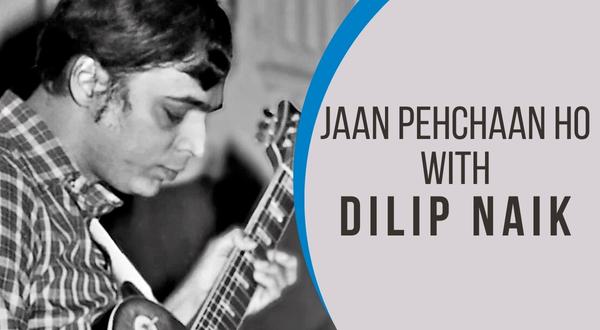
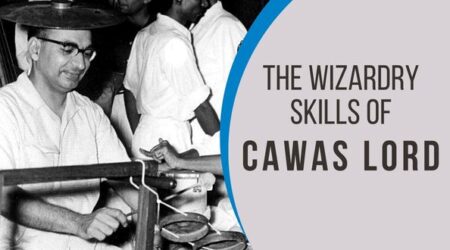
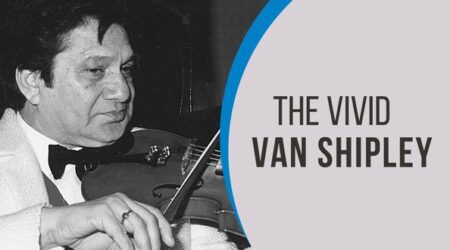
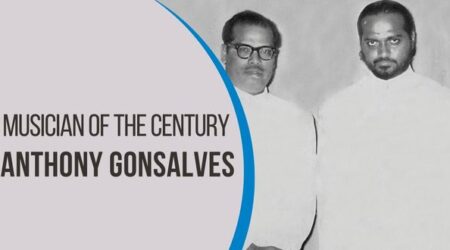
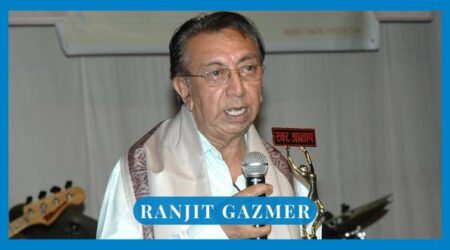
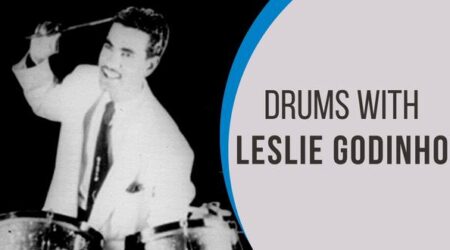
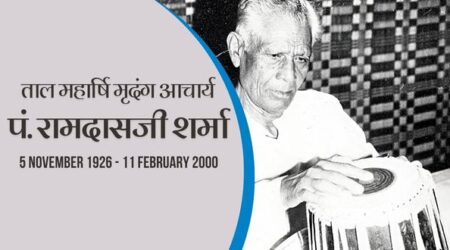
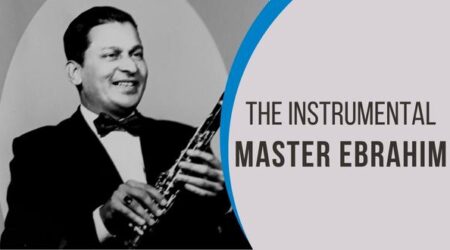
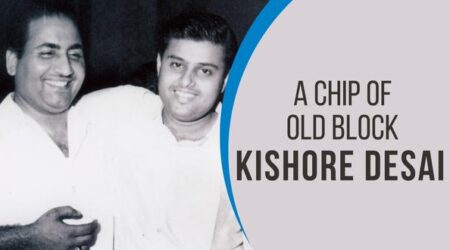
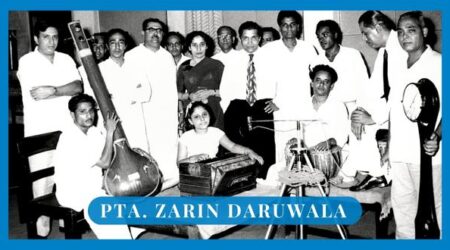
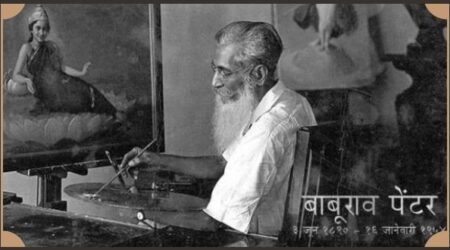

Comments (23)
Can’t thank you enough for getting this interview done. Long and detailed, it gives a good understanding of the legend of Dilip Naik.
Another interesting aspect is that he was a close friend of the British Jazz Great Amancio D’Silva who was originally from India and Dilip ji played alongside him in few Bollywood sessions.Shagird ‘s Duniya Pagal hai is just one example.
It is a shame that a musician of immense talent does not get appreciated in the industry.
I am big fan of Dilip Naik’s music and will keep discovering his music from the classic Bollywood songs .
He is a fine gentleman also who really loves his fans!
A Wonderful interview of legendary and godfather of guitar in hindi cine music industry.
His tone belongs to him only and no one could steal it till today.
The most unfortunate part of his career was, the painful politics against his talent.
There are so many pupil, deciple of him directly and indirectly all over the world.
Whatever was destine,he had enough of it and now it’s our turn to felicitate him,recognise him,honour him otherwise,we do a great injustice to the present generation.
Once again I express my kind gratitude to your team for this effort.
Lovely. I m from very beginning dilipsir fan.n ipray he gets everything he wishes thank u sir for giving us lovely n prestigious information god bless u
What a journey. Well covered.
Lovely interview. Well-researched and well-written!
Great to read about Dilip Naik…. the guitarist whose work speaks through many Hindi film songs of the 60s and 70s. Wish such artists were honoured and remembered more; these are the real behind the scene (unsung) heroes.
Thanks, K V Ramesh for highlighting such a brilliant artiste.
Excellently covered the musical journey of Shri Dilip Naik.
Lovely interview. Well-researched and well-written
Remarkable scope and grasp of the larger context of music and culture. Your questions and his informed answers both speak to a breadth of experience!
Thank you for doing this and bringing it to the world 🙂
Very nice extensive interview.
Very well done interview. This is a perfect example of how interviewers who have a passion for the subject and have gathered enough information, can bring out the best in the subject.
I look forward to more such gems from the Swaraalap team.
This is one of the most interesting interview I came acorras in recent time.Credit goes to you people too because you asked such a questions, that we got the picture very clear.
Dilip is most talented musician of the golden era.His contributions to film industry will be always remembered.
Very well written and presented…. Three cheers to Dilip Naik sir the true Guitar legend ??
This is a wonderful interview with someone who is clearly so gifted. But in addition to his super work in Hindi film songs, I could sense a feeling of pathos and resignation in his thoughts. His visits to USA, the lack of opportunities there and later here, and the struggle. In fact such a feeling of resigned bitterness characterises lots of talented artists across creative platforms. As a writer myself, I know the feeling too. I suppose we just have to thank God we did what we loved, and at least some people found our work worthy of merit. Salutes, sir???
A very fine interview indeed. Crisp, yet rich in content.
Another feather in Swar Aalap’s cap for bringing to the fore, another talented musician, whose guitar riffs have been integral parts of numerous iconic songs in Hindi movies.
This endeavour of Swar Aalap, to highlight the work of these most talented musicians, is utterly praiseworthy. A huge service to Cine-music.
Kudos to the interviewer, Ramesh KV for this interview. It reveals careful prep & plan & also an understanding of Cine-music.
I appreciate team Swar Aalap for taking such initiative. Very nice interview and rich content.
What appeals to me about Swar Aalap is that they not only talk about famous artists but help us to introduce to many unsung heroes from past. today no one takes any efforts to even recognise great artists and musicians from past. Without their contributions these wonderful music would not have been created.
Great work. Thank you for sharing this interview
Thank You So Much for your Kind Words Mr Devang
Brilliant Interview of talented Dilip Naik Sir. Kudos to K.V.Rammesh ji and Dinesh Ghate ji for such an erudite piece on life and works of the most under played artist. Thank you so much.
Beautiful informative article on unsung heroes
Where is Dalip Naik currently.How can one see his playing on you tube.
And how to contact him.
Thank You, Sir Suren Jee, you can find and msg him on Facebook
It was my frequent back-n-forth in 1980-82 to get lessons from him, although I learnt for more than 3 years from Late Vinaykumar Deorukhkar. In every trip from Pune, I visited him at his Bandra place(upstairs) and it was always locked. Finally, in 1995 I met his disciple Shri Arun Kerkar who taught me few times.
I still have passion to play in Dilip Sir style. I met him virtually on FB.
One query. In the song Aaj Kal Tere Mere Pyar Ke Charche (Bramhachari, 1968), I feel that the guitarist shown on screen in the opening music is Dilip Naik Sir himself. Am I correct? Can anyone confirm?